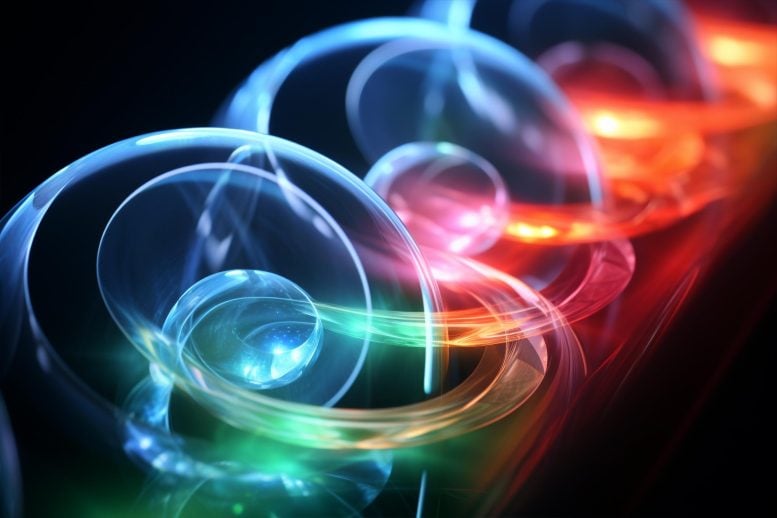
Using a mathematical concept, researchers are improving how light particles interact in special circuits, which could make quantum technology systems more reliable and open up new possibilities for innovation. Credit: SciTechDaily.com
A research team is studying how light moves through special circuits called optical waveguides, using a concept called topology. They’ve made an important discovery that combines stable light paths with light particle interactions, which could make quantum computers more reliable and lead to new technological advancements.
Scientific innovation often arises as synthesis from seemingly unrelated concepts. For instance, the reciprocity of electricity and magnetism paved the way for Maxwell’s theory of light, which, up until now, is continually being refined and extended with ideas from quantum mechanics.
Similarly, the research group of Professor Alexander Szameit at the Institute of Physics at the University of Rostock explores light evolution in optical waveguide circuits in the presence of topology. This abstract mathematical concept was initially developed to classify solid geometries according to their global properties.
Szameit explains: “In topological systems, light only follows the global characteristics of the waveguide system. Local perturbations to the waveguides such as defects, vacancies, and disorder cannot divert its path.”
Breakthrough in Photon Interference and Quantum Technologies
In 1987, the physicists Hong, Ou, and Mandel observed the behavior of photon pairs in a beam splitter in an experiment that until recently had been independent of topology. They discovered that a photon, which interferes with itself due to its behavior as an electromagnetic wave, is also able to form interference patterns together with other light particles. In addition to entanglement as a further fundamental feature of quantum light particles, this groundbreaking discovery has proven to be an instrumental ingredient for new optical quantum technologies, including quantum computers.
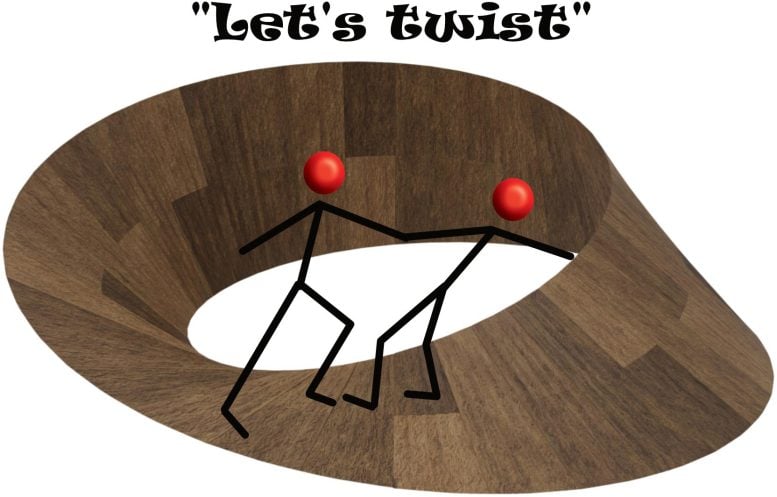
Two photons (as stick figures) dance on a Möbius strip. Their joint movement along this twisted dance floor is the result of quantum interference. Classically, each of the two photons would go their own way on a plane field. Credit: University of Rostock, Institute of Physics
Quantum Innovation through Topological Protection
In a joint effort with colleagues from the Albert-Ludwigs-Universität Freiburg, the researchers have accomplished to combine topologically robust propagation of light with the interference of photon pairs.
“This result is truly a milestone,” says Szameit, who has been searching for such a connection for a long time.
Max Ehrhardt, doctoral candidate and first author of the work, continues: “Quantum technologies struggle with ever-increasing complexity. Hence, topological protection of optical elements is a much-needed design tool to ensure proper operation regardless of the finite manufacturing tolerances of the optical elements.”
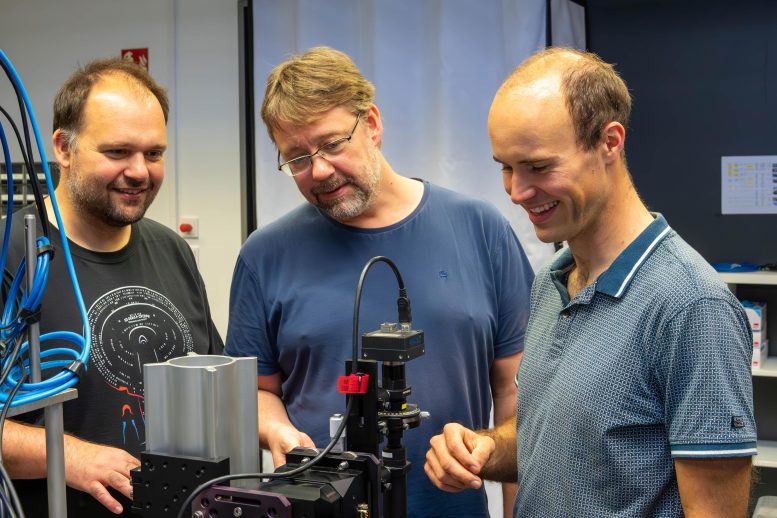
(From left to right) Matthias Heinrich, Alexander Szameit and Max Ehrhardt – the authors of the Science paper – experimenting with photonic circuits. Credit: University of Rostock
The physicists attribute the observed peculiar behavior to the quantum nature of light: “Pairs of photons that see each other perceive the waveguide structure as twisted. This causes them to link up, as if they were dancing along the twisted dance floor as a couple. Photons that pass through the waveguide separately only experience a conventional flat surface. So, we have a topological difference”, continues Ehrhardt to explain the mechanism.
The group’s senior scientist Dr. Matthias Heinrich, summarizing these fascinating measurements, said “We were amazed just how far we could deform our waveguide system without any impact on quantum interference.”
Future Directions in Topological Quantum Systems
Szameit already thinks of further perspectives to be investigated by his team: “Our waveguide systems provide a rich pool of possibilities for constructing topological systems for light. The symbiosis with quantum light is just the beginning.”
Reference: “Topological Hong-Ou-Mandel interference” by Max Ehrhardt, Christoph Dittel, Matthias Heinrich and Alexander Szameit, 20 June 2024, Science.
DOI: 10.1126/science.ado8192
This research was funded by the German Research Foundation, the European Union, and the Krupp von Bohlen and Halbach Foundation.


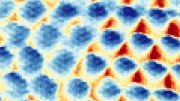
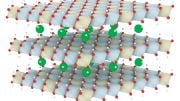
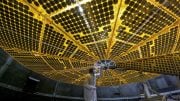


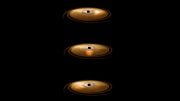
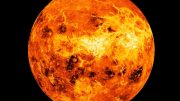
Two photons (as stick figures) dance on a Möbius strip. Their joint movement along this twisted dance floor is the result of quantum interference. Classically, each of the two photons would go their own way on a plane field.
very nice!
Please ask the researchers to answer:
1. Where does the power of two photons (as stick figures) dance on a Möbius strip come from?
2. Why do photons move?
3. Where does the power of endless motion in the particle world come from?
4. Has contemporary physics always been fooled by pseudoscience?
5. Why is contemporary physics obsessed with pseudoscience without shame?
The perpetually swirling topological vortices defy traditional physics’ expectations. According to the theory of topological vortex gravitational fields, there is a common connection in the physical world, which is the interaction and balance of topological vortex gravitational fields.
If researchers are willing to further consider, you can browse https://zhuanlan.zhihu.com/p/693933588 and https://zhuanlan.zhihu.com/p/595280873.
Scientific research guided by correct theories can help humanity avoid detours and failures.
Good luck to the researchers.
A minimal error or deviation may result in wide divergence.
Keep always.like.this.resarch.for.allways.to.futre.humanty.knowolege.etc.
Terrence Howard. Give him his credit.
I want article like this
I have found the article very interesting, inspiring, informative and innovative.